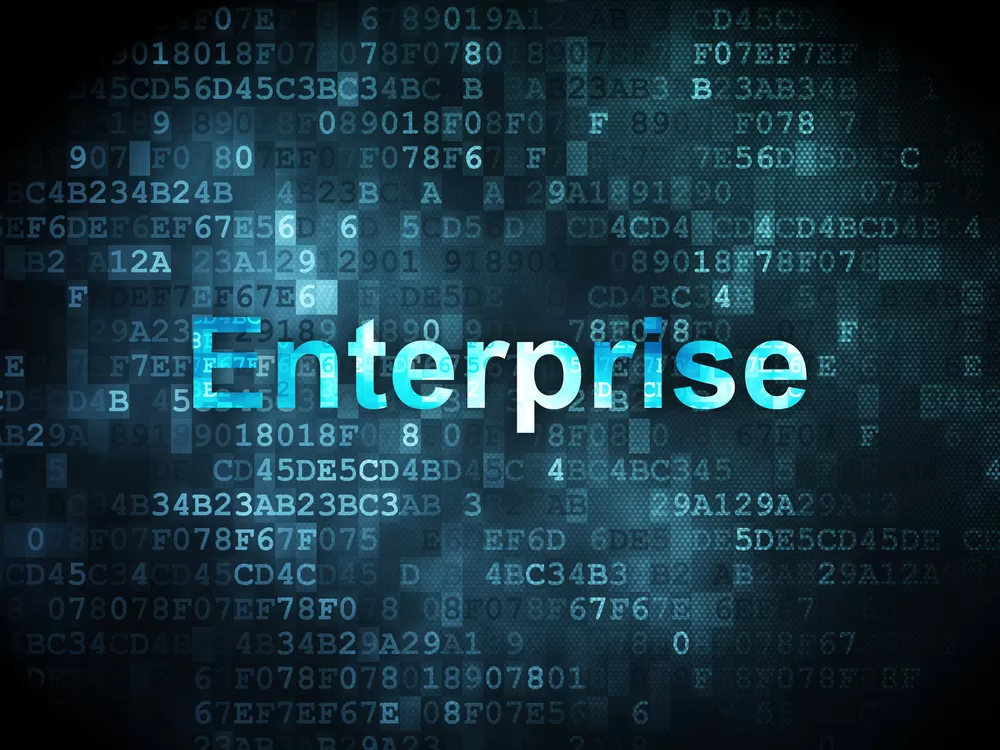Managers and HR personnel may dedicate eight hours a week or more to creating schedules for the following week, especially with complex shift patterns or a large workforce. When scheduling conflicts arise, the quality of work may be affected, and an even greater number of hours may be wasted working the kinks out! Implementing scheduling software can help prevent these dilemmas and also provide many other benefits.
Our 2025 Preferred HR Software Partners

Paycor HCM
By PaycorCompany Name
Paycor
Suitable Company Sizes
Small, Medium, Large
Support Available
Android, IOS, Web Browser, Windows
Keys for Effective Employee Scheduling
How to schedule employees is a major issue facing employers. It’s important to meet the needs of your business while also taking into account employee needs. It’s also a balancing act to schedule employees without either overstaffing or understaffing.
Create and Implement Scheduling Policies
Creating and implementing scheduling policies is key to effectively scheduling employees. Creating a policy and sticking to it can help ensure that scheduling is fair and issues are handled the same way across the board. Decide ahead of time how to handle employee requests for time off. Ensure that the schedule is available a set number of days in advance so employees can plan accordingly. Create an equitable holiday policy so no one has to work every holiday while others get to spend that time with their families.
Address Business Requirements
Scheduling to meet your business needs is an essential part of running that business. Overstaffing means that you’re paying more employees than necessary to work a shift and can result in lost money. Understaffing means that your employees have more tasks than they can reasonably complete and will feel stressed and have low morale as a result. Finding the right balance for each shift is important for ensuring that your business runs smoothly.
Meet Employee Needs
Your employees have needs outside of work. Perhaps they have children. Maybe they’re going to school and have classes they need to get to. Someone could be trying to care for an elderly parent while working to make ends meet.
You’ll want to ensure that your schedule can also meet your employee’s needs as closely as possible. Avoid last-minute schedule changes so employees know as far as possible in advance what they’ll be working the next week. Try to ensure that employees work shifts that best fit with their lifestyles. Someone with a family may be better suited to a morning shift while a student with morning classes may prefer the night shift.
How to Create an Employee Schedule
“But how do I schedule my employees?” you might ask. Understanding how to schedule employees effectively will help ensure your business can run smoothly and even reduce turnover. But what is the best way to schedule employees? The following steps will help you learn how to make a schedule for employees.
Know Your Staff
The first step is to know your team. Some managers are only concerned with making sure there are enough employees showing up for each shift and skip this step. However, it’s actually a very important part of scheduling employees. Knowing each member of your team is important to go beyond just filling shifts and really furthering your business. If you know each of your employees, their preferences, their strengths, and their weaknesses, then you can schedule a team that complements each other.
Create Shifts for Your Top Employees
It’s important to match the right employees to the right shifts. Someone who handles stress better may be better suited to a busy shift while someone who’s more personable may handle a customer-focused shift better. Once you have the best employee for each shift determined, use the schedule to build a team to support that person.
Communicate Effectively to Your Entire Team
No matter how meticulously you craft your schedule, it’s no good if your employees don’t know about it. Without communication, your employees may inadvertently miss shifts or arrive late. Having an effective means of communicating the schedule to your staff can make the difference between understaffed and fully staffed shifts. It’s important for the entire team to use the same communication method to communicate. That way no one has to search through old texts or emails for the latest schedule.
Produce the Schedule Quickly
The earlier the schedule is finalized, the better. In fact, at least two weeks ahead of time is recommended. This is because employees have lives outside of work that they need to plan. The sooner the schedule is ready, the sooner they can prepare for the next few weeks. This is important for all employees, whether they have children or not. Having the schedule ready early also gives employees time to find substitutes or to swap shifts if they need to.
It’s also beneficial to your business to have the schedule done weeks ahead of time. Employees that have to scramble at the last minute because they didn’t know they were working may be more likely to not show up. Late schedules or constantly changing schedules can also encourage employees to find work elsewhere.
Honor Employee Preferences
As much as possible, honor employee preferences and requests for time off. Employees will understand that their requests and preferences aren’t always possible, so long as the effort is made to do so. Respecting employee preferences and honoring time-off requests can go a long way towards earning the goodwill of your staff. The happier employees are with the schedule, the more loyal they will be to the company and the less likely they are to leave.
It’s important to have rules that govern how to schedule employee shifts. If some employees’ requests are honored but others aren’t, it can look like favoritism if rules aren’t in place to manage the process.
Delegate Scheduling Tasks
Fortunately for busy managers and business owners, there are employee scheduling techniques that can relieve the burden of creating the schedule. Delegating the task of creating the schedule to your staff. Having a part in creating the schedule can give employees a real sense of ownership over the schedule. They’ll be more engaged in their work when the feel like they’re contributing more to the company.
Allow Employees to Swap Shifts
Some flexibility is required when you create work schedules. Sometimes, employees get sick and can’t come in. Sometimes employees have personal emergencies that come up. If you allow employees to swap shifts with each other or call in their own substitutes, that can take some of the burden off the manager. Of course, if the employee can’t find a sub, then it’s the manager’s responsibility to fill the shift. However, most of the time, employees can take care of the problem themselves without the manager having to step in.
Chart Employee Availability
If finding a substitute does fall to the manager, an employee availability chart can be a lifesaver. Charting when your employees are available and when they aren’t can help you find a sub when you need one. Plus, it’ll make creating the team member schedule easier in the first place. Then, when an emergency does occur, you’ll know who’s available even though they’re not scheduled for that shift.
Have a Backup Plan for the Backup Plan
No matter how well you plan, something is sure to go wrong. Having an employee availability chart can help you come up with a Plan B when something does go wrong. However, it can be a good idea to have a Plan C as well. Having some reliable part-timers who can be on-call in the event of an emergency can really help managers avoid understaffing.
Should You Use HRIS for Employee Scheduling?
If your company operates on a 9-5 schedule and is closed for the weekend, you may not see a benefit from using HRIS for scheduling. However, if your company operates over a longer period of time, contains multiple departments or areas that operate on different schedules, or has a differing degree of complexity with scheduling, HRIS software may help to make scheduling easier.
Although every type of scheduling software will not offer all available benefits, the following paragraphs outline the benefits that may be obtained by using certain types of software. When selecting the scheduling software or HR software programs with built-in scheduling software, it is imperative to make sure the software meets your exact needs. Make your priorities clear to the vendor, so that they are able to help you enjoy the scheduling software benefits as quickly as possible following implementation.
Using HRIS for scheduling can be of particular benefit to workplaces in industries such as retail, medical, food service, and hospitality where shifts may vary widely. But what are the benefits of using a HRIS for scheduling?
Collaborative Scheduling
Collaborative scheduling allows employees to set their own availability and manage shift trades. This allows managers and HR professionals to ensure that all shifts are covered and approve employee requests and input. By sharing the scheduling responsibilities, managers can reallocate up to 80 percent of their time to more productive tasks.
Minimizes Scheduling Conflicts
Allowing employees to set their own availability and help collaborate on schedule may automatically mitigate scheduling conflicts. Errors with time off requests will be minimized and employee satisfaction will increase, as employees are able to make the schedule work for their needs. By allowing employees to work a schedule they prefer, the organization may see gains in productivity.
Alerting for Understaffed or Uncovered Shifts
It is easy to make mistakes when using a pen and paper or spreadsheet to work up a schedule. HRIS can be configured to alert you to uncovered shifts or shifts where more coverage is needed based on forecasts. This can divert potential disasters and help you avoid ever being short-staffed.
Strategic Scheduling
When scheduling is made easy, it is possible to focus on scheduling strategically so that employees can be cross-trained through various departments or otherwise receive instruction that helps them to grow within the organization. HRIS can help you to identify times when it may be possible to assign certain employees training tasks or simply take employees aside and teach them new skills. This can help your company to increase the value of labor hours and invest in employees without breaking the bank.
Saved Labor Hours
Many scheduling software programs allow schedules to be easily carried over from previous weeks, then altered using a drag-and-drop method. Employee names may be dragged onto a shift with a few clicks of the mouse. Shifts may be dragged from one day to the next, which will make scheduling fast and simple.
In turn, this will save labor hours and dollars. Many programs even update and save automatically. So instead of searching for the save button, you can save time and prevent calamities in which the schedule is accidentally erased before saving it.
Labor-Management Tools
Labor is the number one expense for most companies, so it is important to manage labor in the most efficient way possible. HRIS can synchronize scheduling with sales and productivity forecasts to help manage labor as you schedule, rather than when it’s too late. This can help you to optimize scheduling on a minute to minute basis so that your company is making the best use of every labor dollar spent.
Sophisticated Staffing Information
Some scheduling software programs collaborate with other HR and business data to provide sophisticated information regarding staffing needs. This can help in decreasing the number of conflicts caused by understaffing and can also prevent your business from paying out overtime or scheduling unnecessary shifts. Scheduling software may also let you know whether your business is meeting its labor percentage goals, or provide information about exactly how close you are to meeting those goals.
Scheduling Templates
HRIS software usually provides scheduling templates and may even make it a snap to copy over the schedule from the previous week or month and make changes to accommodate current business needs. This can save time from penciling in shifts that will stay the same. Templates can also help you to easily utilize feedback from previous scheduling issues to improve future shifts.
Remotely Accessible Schedules
Many scheduling software programs offer mobile accessibility. This function allows employees to view their schedules remotely, 24 hours a day and seven days a week. If desired, employees may even set up the portal before shifts begin, to provide SMS or email notifications within a set amount of time. These options may help prevent issues with employees misreading the schedule or forgetting shifts. As a result, the business can function seamlessly, and the employees can benefit from their downtime.
Instantaneous Communications
It is not an exaggeration to say that employees base their lives around their work schedules. Having scheduling information in advance regularly can quickly and dramatically increase employee contentment.
However, having to communicate with each individual employee as they move through varying shifts to relay schedules can be disruptive to work and difficult. Communicating schedules instantly through HRIS can help to reduce headaches and scheduling mishaps.
Increased Employee Satisfaction
In addition to increasing contentment because of the ease of looking up the schedule online, HRIS may help to increase employee contentment in other ways. Depending on the available features, employees may be able to submit feedback regarding preferences in regards to scheduling. Knowing which employees prefer the late shifts, which prefer the early morning shifts, and which employees would like to pick up available additional shifts can simultaneously make scheduling easier and make employees happier.
Employee scheduling software can be beneficial in many ways, but not every HR software package comes equipped with this functionality. If you would like to upgrade to HR software with scheduling options, we can help. Visit our Software Match page to begin your selection journey.












